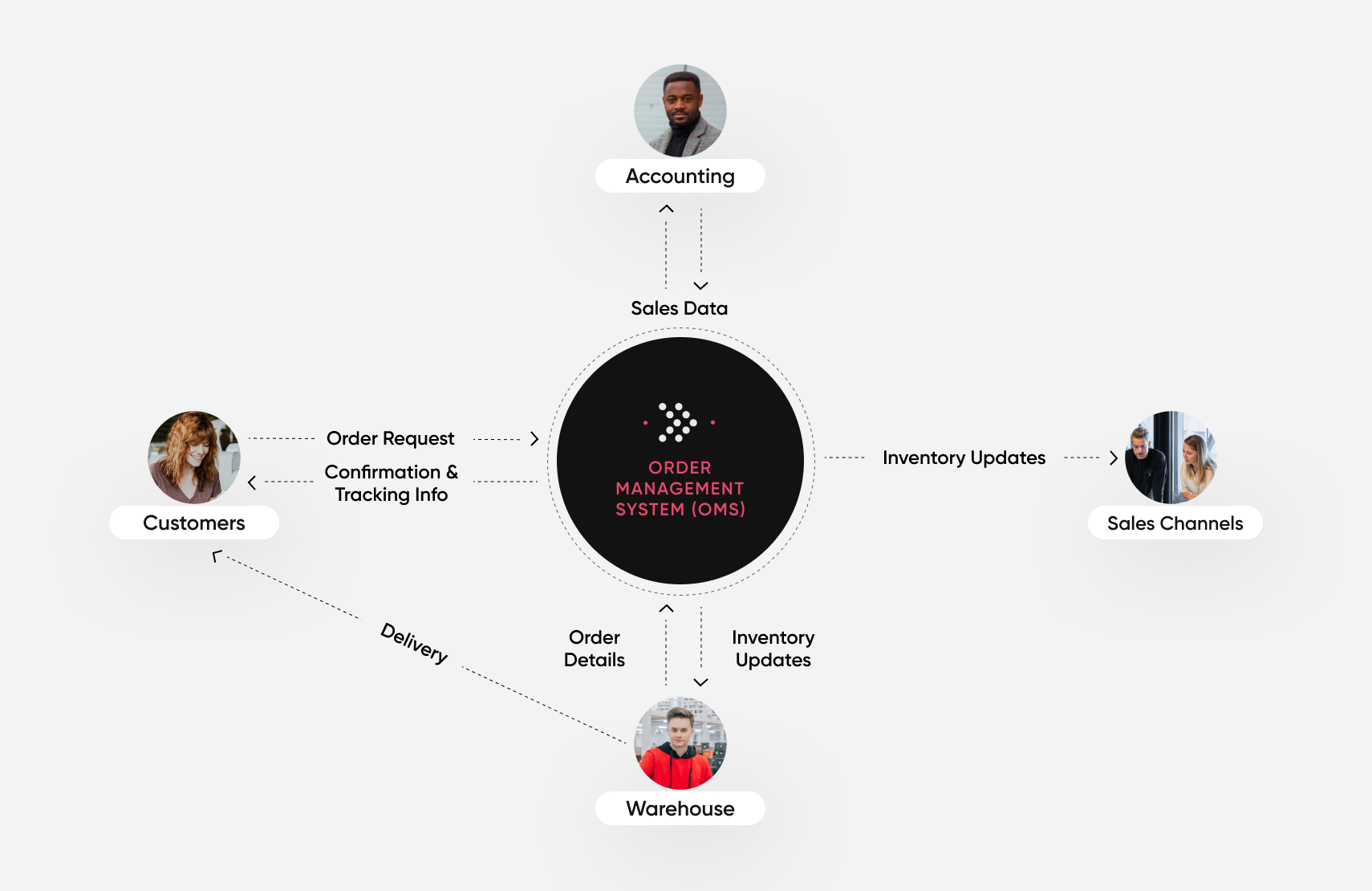How Do You Improve Order Management Process Flow?

An efficient order management process is critical for today’s online retailers. Customers expect speedy, error-free deliveries and are not afraid to switch to competitors over a negative fulfillment experience.
The typical flow for the e-commerce order management process is some variation of the following:
- The customer places an order on a company’s e-commerce site or third-party sales channel
- The company records and accepts the order after validating payment details through a payment gateway
- A confirmation email is sent to the customer verifying the purchase
- The order details are sent to the company’s warehouse or third party logistics provider (3PL)
- The products are picked, packed, and shipped to the customer
- The customer receives a shipping confirmation email and the order
On the surface, the process seems straightforward. But it gets more complicated when you have orders coming from different sales channels. E-commerce companies without a centralized solution for managing the process can experience operational inefficiencies. In this post, we’ll examine how dedicated order management software can help streamline the order management process flow.
[toc-embed headline=”How Manual Processes Limit Order Management”]
How Manual Processes Limit Order Management
Many of the inefficiencies during the order management process are the result of using ineffective technologies. Two popular choices are to simply use an e-commerce platform or spreadsheet.
E-commerce platforms can handle some parts of the order management process but come with limitations. The order management tools built into most platforms only allow you to capture and track orders from your e-commerce site.
You can get by with this if all your orders come from your e-commerce website and you do not sell through any third-party channels. However, if you sell through more than one channel, or if you have multiple warehouses, you’ll need an additional system to manage inventory and the orders from other channels.
Many businesses turn to manual processes to manage orders across different sales channels. This generally involves using a spreadsheet to compile orders from each channel. Inventory is updated manually in the spreadsheet. These changes are then manually applied to each sales channel. If the company has multiple warehouses, a team member will have to manually choose the warehouses for order routing.
Manual order management like this is time-consuming, resource intensive, and unscalable. The time that staff spends updating the system could be better spent on other tasks. Manual processes are also more prone to human error which can lead to further delays in fulfilling orders.
[toc-embed headline=”How to Improve the Order Management Process”]
How to Improve the Order Management Process
Standalone order management systems (OMS) provide an end-to-end tool for tracking and managing inventory and orders across multiple channels. With a centralized order management tool, you are free from the bottleneck of having to log into multiple systems to complete essential tasks.

The OMS processes orders from any channel, making details for every order available in a single place. Parts of the workflow are automated, eliminating many manual processes. Some of the tasks an OMS can automate include:
- Processing payment
- Routing orders to the appropriate warehouse
- Choosing the best shipping carrier based on the customer’s location
- Printing shipping labels
- Forwarding information to the accounting system
- Updating inventory levels in real-time
- Sending transactional messages like confirmation emails
With an OMS, information moves between different parts of your e-commerce system instantly. This enables orders to be processed and delivered faster. Less manual input also leads to far fewer errors throughout the fulfillment process.
[toc-embed headline=”Scaling Order Management With OMS”]
Scaling Order Management With OMS
With Fabric OMS you can streamline the order management process by bringing orders, inventory, and warehouses into a single system. APIs make it easy to connect your existing e-commerce systems or third-party services. Semi-automated workflows eliminate manual tasks. As a result, you can achieve fast and affordable order fulfillment across any channel and at scale.
Tech advocate and writer @ fabric.